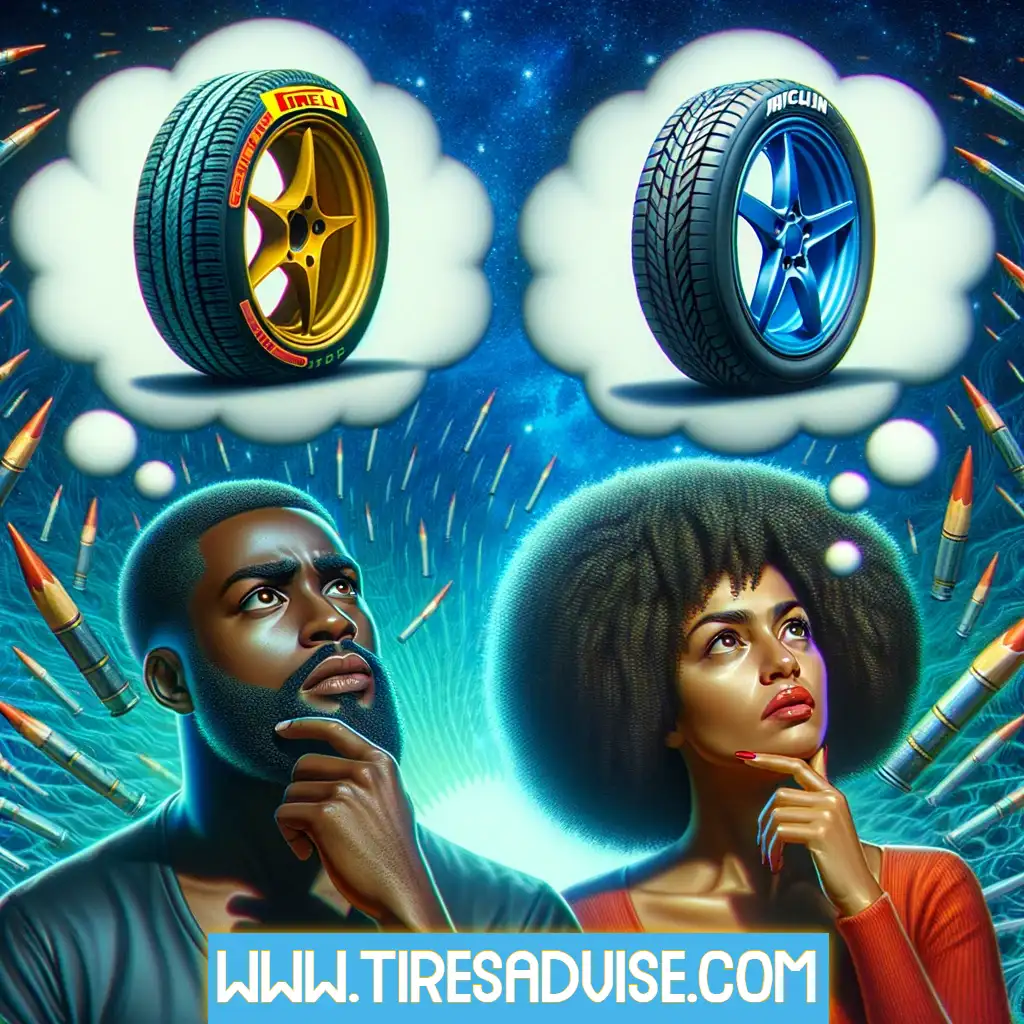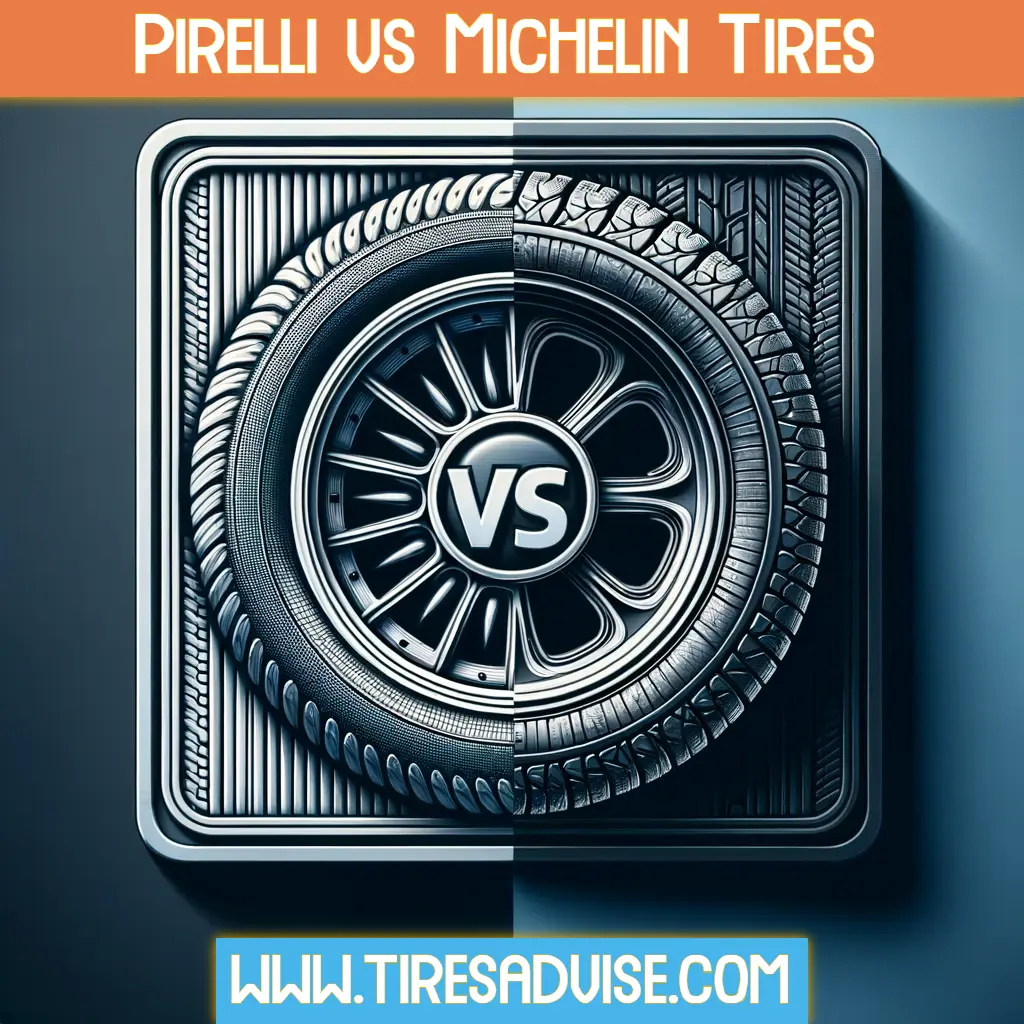Choosing the right tire for your vehicle is like selecting the perfect pair of shoes for an important event. Just as you wouldn’t wear flip-flops to a formal gala, you wouldn’t want to equip your car with tires that don’t suit its needs or the conditions it faces.
In the world of tires, two names often rise to the top: Pirelli and Michelin. Pirelli and Michelin are both excellent all-season tires, with the Michelin tire slightly outperforming the others in harsh conditions.
But what sets them apart? Is it the grip on wet roads, the durability over rough terrains, or perhaps the comfort of the ride?
Dive into this article, and we’ll unravel the intricacies of these two giants, guiding you through the maze of tire choices.
By the end, you will have the knowledge necessary to make an informed decision, ensuring a safe and enjoyable voyage.
Historical Overview of Pirelli and Michelin Tires
The tire industry has seen many giants rise and fall, but two names have stood the test of time, leaving indelible marks on the roads of history. Pirelli and Michelin, with their rich legacies, have not only shaped the way vehicles move but have also influenced automotive innovations for over a century.
The Legacy of Michelin
Michelin, a brand synonymous with quality, began its journey in the late 1800s. Here’s a snapshot of their remarkable journey:
- In 1889, two brothers, André and Édouard Michelin, laid the foundation for what would become a global tire empire: Michelin & Cie.
- Fast forward to 1946, Michelin introduced a game-changer to the world: the radial tire, known as the “X” tire. This innovation transformed the tire industry, setting new standards for safety and performance.
- By 1970, Michelin’s reputation for excellence was so strong that they secured a contract for the Continental Mark III, making it the first American car to sport radial tires as a standard feature.
- The brand’s growth was unstoppable. In 2012, Michelin was producing a staggering 166 million tires across 69 facilities spread over 18 countries.
- Michelin’s commitment to motorsports was evident when, in 2019, it became the official tire supplier for the International Motor Sports Association (IMSA).
Pirelli’s Journey Through Time
Pirelli, an Italian marvel, has been rolling on the roads even longer than Michelin. Here’s a glimpse into their storied past:
- The year 1872 saw the birth of “G.B. Pirelli & C.”, a limited partnership founded by Giovanni Battista Pirelli.
- The early 1900s were bustling for Pirelli. They expanded their reach by opening plants in Barcelona in 1902, Southampton in 1903, Buenos Aires in 1917, Manresa in 1924, and Burton on Trent in 1928.
- The 1930s were pivotal. Pirelli acquired the struggling Citroën and went on to develop the radial tire, which they initially marketed as the “X” tire.
- Fast forward to 2010, Pirelli’s expertise in tire technology was recognized globally when it became the exclusive tire supplier for Formula 1. The same year, they established the Pirelli Foundation, ensuring their rich history and contributions would be preserved for future generations.
Why does Tire Choice Matter for Drivers like choosing between Pirelli and Michelin?
Selecting the right tire, such as deciding between Pirelli and Michelin, is more than just a purchase; it’s a decision that impacts every drive. Here’s why this choice is so pivotal:
- Safety First: Tires are your car’s shoes. Just as you’d want sturdy shoes on a rainy day, you’d want tires that grip the road firmly. The right tire enhances handling and braking, especially when roads are slick or tricky.
- Boosted Performance: Consider your tires to be the heartbeat of your vehicle’s performance. The right ones can pep up acceleration and even help save fuel. It’s like choosing between running in flip-flops or athletic shoes; one clearly gives a better sprint!
- Ride in Comfort: Ever noticed how some car rides feel smooth while others are noisy or bumpy? That’s often down to the tires. The right pick can cushion your ride, making long drives a breeze and city commute less of a chore.
- Cost Savings: While it might seem like just rubber, a good tire choice can be kind to your wallet in the long run. Quality tires wear out slower, meaning fewer trips to the tire shop and more money saved.

Similarities between Pirelli and Michelin Tires
- Both Pirelli and Michelin are giants in the tire industry, celebrated for crafting tires that blend performance, safety, and durability seamlessly.
- Delving into their past, it’s clear that innovation is in their DNA. A peek into their technological feats is fascinating. For instance, Michelin’s ventures into Acoustic Technology specialized Electric Vehicle Tires, and the iconic Radial tire have set them apart. On the other hand, Pirelli’s Milano production method, Superflex tires, motorsport-focused low-profile tire, and the Pirelli Connesso system showcase their prowess in innovation.
- Their commitment to cutting-edge technology is unwavering. They’ve harnessed state-of-the-art features, ensuring their tires offer top-notch handling, come rain or shine.
- Drivers are spoilt for choice with both brands. Whether it’s tires for everyday commutes, long drives, sporty adventures, or eco-conscious rides, Pirelli and Michelin have an array to pick from.
- Quality doesn’t come cheap, and that’s true for both brands. While their tires might be on the pricier side compared to others, they’re a testament to the adage “quality over quantity.” These tires are built to last, offering value in the long run.
Differences between Pirelli and Michelin Tires
Pirelli and Michelin are two of the world’s premier tire manufacturers, producing high-quality tires with outstanding performance, dependability, durability, safety, and fuel efficiency. According to the search results, there are some distinctions between Pirelli and Michelin tires.
1. Price Point
While both Pirelli and Michelin are premium brands, Pirelli tires tend to be pricier. On average, they can be about 10-15% more costly than their Michelin counterparts. This difference might be attributed to Pirelli’s focus on specific high-performance and luxury segments.
2. Range of Tire Families
Michelin boasts a wider array of tire families. They have popular touring tires like the Defender, Primacy, and Premier. Pirelli, conversely, zeroes in on refining specific tire series, such as the P Zero, Cinturato, and Scorpion. It’s like Michelin offering a full buffet, while Pirelli perfects specific gourmet dishes.
3. Availability
Michelin tends to have more versions of each tire, translating to a broader catalog. This makes Michelin tires more accessible to consumers compared to Pirelli.
4. Eco-friendliness and Technology
Pirelli prides itself on crafting tires with an eco-friendly touch. Meanwhile, Michelin has ventured into noise reduction, introducing the Michelin Acoustic Technology or PIANOp Acoustic. It’s akin to Pirelli focusing on green energy, while Michelin emphasizes a quiet ride.
5. Overall Performance
If you’re after a serene, smooth ride, Michelin might be your go-to. They’re known for comfort and quietness. Pirelli, however, shines in the performance and eco-friendly sectors. It’s like choosing between a plush sofa and a sporty race car seat; both are great, but they serve different purposes.
6. Market Share and Sales Figures
Michelin takes the crown as the top revenue-generating tire manufacturer globally, raking in a whopping $28 billion+ in 2022. Pirelli trails in the 6th spot with over $6 billion. Michelin’s vast R&D has birthed innovations like the radial tire, enhancing safety and durability. Pirelli, with its deep roots in motorsports, has introduced tech that’s transformed racing.
7. Cost-Benefit Analysis for Consumers
Pirelli’s higher price tag might make consumers pause, but it’s essential to weigh the benefits. Both brands offer stellar performance, and while they might be pricier than other brands, they promise value.
Michelin’s broader tire family range versus Pirelli’s concentrated excellence in specific series means consumers have a buffet of choices. The decision boils down to individual needs, driving conditions, and, of course, budget.

Tabular Comparison between Pirelli and Michelin Tires
| Criteria | Pirelli | Michelin |
| Price Point | Typically higher due to specialization in luxury and high-performance segments. | Offers a broader range, often resulting in more competitive pricing in common tire categories. |
| Range of Tire Families | Focuses on specific series like P Zero, Cinturato, and Scorpion. | Diverse range including Defender, Primacy, and Premier. |
| Availability | Global presence but might have a more limited range in certain regions. | Widely available globally due to extensive product range. |
| Eco-friendliness | Emphasizes sustainable production and eco-friendly materials. | Introduced noise reduction technologies like Acoustic Technology. |
| Performance | Known for dynamic handling, especially in performance segments. | Prioritizes comfort and quietness, ideal for daily commutes. |
| Market Share and Sales | Strong in the motorsports segment. Ranks 6th globally with over $ 6 billion in 2022. | Leading tire manufacturer globally with $ 28.3 billion in 2022. |
| Technological Advancements | Innovations tailored to motorsports and luxury, e.g., the Pirelli Connesso system. | They introduced industry standards like the radial tire and noise reduction technologies. |
| Cost-Benefit Analysis | Premium pricing but offers specialized performance. | A broader range offers value for money in common tire categories. |
Conclusion
In the realm of tire manufacturing, both Pirelli and Michelin stand as titans, each carving a unique niche. While Pirelli’s legacy is deeply intertwined with motorsports and luxury performance, Michelin’s expansive range caters to a broader spectrum, emphasizing comfort and longevity.
Delving into their histories, technological advancements, and market presence reveals a tale of two brands, each committed to excellence but with distinct focuses. Ultimately, the choice between Pirelli and Michelin boils down to individual preferences and specific driving needs.
However, if one were to distill the essence of the debate: Pirelli shines in performance and specialization, while Michelin offers versatility and widespread reliability.

